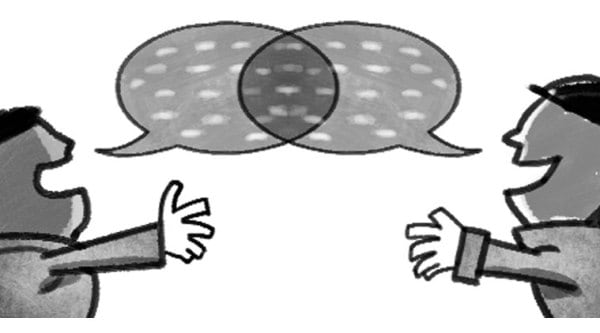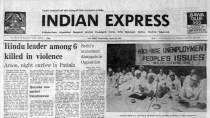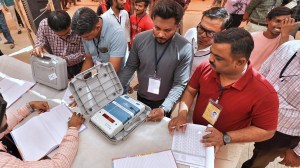- India
- International
‘Closeness of the Indo-Germanic language family is not just heritage… it’s a mandate and assignment for us’
English has become a kind of global ‘lingua franca’.
 Highlighting Indo-Germanic closeness should not be left to historians and altphilologen. It is a task and commitment for politicians, movers and shakers of today in both our countries. I’ll come back to that.
Highlighting Indo-Germanic closeness should not be left to historians and altphilologen. It is a task and commitment for politicians, movers and shakers of today in both our countries. I’ll come back to that.
Michael Steiner
An Indian girl wrote to me: “Hindi German, bhai behen”. I think she is right. Our roots are intertwined. Sanskrit, the mother language, is closely related to Old German language. We need both: a strong sense of cultural identity and openness in a globalised world. German scholars have, for a long time, expressed their deep respect and emotional warmth towards Sanskrit. Against this backdrop, I was invited to speak at the inaugural ceremony of the “Sanskrit Heritage Caravan” in Delhi in February 2013. What was important then, might even be more important today:
Let me be bold and tell you, right at the outset, what thoughts and feelings I want to share with you on this remarkable occasion.
First, a sense of deep respect and emotional warmth towards the millennia-old history of the Indo-Germanic language family, its similarity and intellectual closeness, all linked to mother language Sanskrit. By the way, the scientific term of the “Indo-Germanic language group” itself can be traced back more than 200 years. Second, the firm belief that this familiarity is not just heritage and a distant past, but a solid fundament for us today to build our shared future. Indeed, it’s a mandate and an assignment for us.
In other words, highlighting Indo-Germanic closeness should not be left to historians and altphilologen. It is a task and commitment for politicians, movers and shakers of today in both our countries. I’ll come back to that.
One cannot but marvel at the evident similarities between Sanskrit and German. Although the distance between the two languages is of thousands of years and kilometres, one can easily detect and discover the linguistic and etymological affiliations. Let me just give a few examples that, though well-known to linguistic experts, may nevertheless be of interest to this audience. One has to understand that the Aryan knowledge of horses, horsemanship and the spoked wheel was certainly technological “state-of-the-art” around four millennia ago.

This technological leadership translated into astounding language similarities:
* The Sanskrit word for chariot, ratha, re-emerges in the German Rad;
* Aksha, axle in Sanskrit, led to German Achse, which is also used in the figurative sense of a close union and alliance;
* Unlike many other languages, both Sanskrit and German use all three genders: feminine, masculine and neutral.
An even more fascinating example of mental closeness at a conceptual level:
* Gribh or garbh in Sanskrit was gripan, and is now Griff or greifen in German;
* Yet, symptomatically, both in Sanskrit and in German, the word for physical action of the hand — to grab, to seize — was also transferred to
the non-material, intellectual sphere. In both languages, the same word is used for the physical activity as well as for the mental activity of ‘to understand’, ‘to perceive’, as in the German begreifen.
It’s so tempting to carry on with these examples because these similarities are so fascinating. Yet, for the sake of brevity, let me leave it at that.
This is the moment to pay tribute to the work of the German Orientalists and Indologists of the 18th and 19th century. They brought India back to Germany. It certainly created a warm and favourable impression of India in the minds of many Germans and quite a fascination in the hearts of some. Max Müller, of course, is the namesake for our Goethe Institutes in India today. The translation of Kalidasa’s Shakuntala into German in 1791 created quite a sensation among young and wild intellectuals like Johann Wolfgang von Goethe and Gottfried Herder, who were among the first to read and write about it euphorically. Shakuntala obtained the status of a “rock star” in Germany in those days. Later, in 1879, Otto von Böhtlingk published a “Sanskrit dictionary in short version” — “short version” meant to this accurate German to limit himself to a mere seven volumes.
Why did the classical Indian literature attract such a great deal of interest among German scientists, philosophers and poets? Well, a question for a two-week-long seminar. Let me cut it short again and instead read to you a quote that says it all. It’s from the book “The major trends in literature” published in 1872 by Danish historian Georg Brandes. I quote: “It was not a surprise that there came a moment in German history when they — the Germans — started to absorb and to utilise the intellectual achievements and the culture of the ancient India. It is because this Germany — great, dark and rich in dreams and thoughts — is in reality a modern India. Nowhere else in world history has metaphysics bereft of any empirical research achieved such a high level of development as in the ancient India and the modern Germany.”
Needless to say, this assessment was taken for real and, in fact, understood as a compliment!
From that remarkable quote, it is only a short step to the real “Modern India” and our real Indo-German relations of today.
A lot has been achieved, yet a lot also remains to be done. The opportunities are “infinite”. But they will not just come over to us without our doing. We’ll have to “grab” them (never mind whether in Sanskrit, German, Urdu or Hindi).
Our strongest asset is the young generation — in India and in Germany. Their interest in each other’s life and culture is the essential ingredient to any greater closeness in the future. The door-opener for that is language. True, English has become a kind of global “lingua franca”. You can get by with that all over the world, certainly also in Germany. But, let’s face it, real mental closeness is only achieved through knowledge of each other’s mother tongues.
Max Müller Bhavan successfully cooperates with the Kendriya Vidyalaya schools in a German-language teaching programme, which is the biggest programme of its kind worldwide. We will promote further this enormously successful language programme.
Why? Because the number of students is enormous, and demand is still growing. They are very talented. And the Indian students are better than others at learning German, maybe because we come from one language family, the Indo-Germanic group.
In the 18th and 19th centuries it might have been a bit of a one-way street with Goethe, Herder, Max Müller, Schlegel, Böhtlingk being fascinated by Sanskrit and its literature. Today, we need an autobahn in both directions. And here, beyond politics and economics, our shared language heritage can be instrumental. I saw the sparkle in the eyes of keen, eager, smart, bright, talented, likeable Indian students, girls and boys, learning German in many KV schools. I saw the fun they had with it.
This gives me the confidence that, on the foundation of our deep-rooted links, on the magic nearness of Sanskrit, Hindi and German bridging thousands of kilometres of distance, we can build ever stronger Indo-German ties in the future.
The writer is ambassador of the Federal Republic of Germany to India
40 Years Ago
EXPRESS OPINION
More Explained
Apr 18: Latest News
- 01
- 02
- 03
- 04
- 05









































